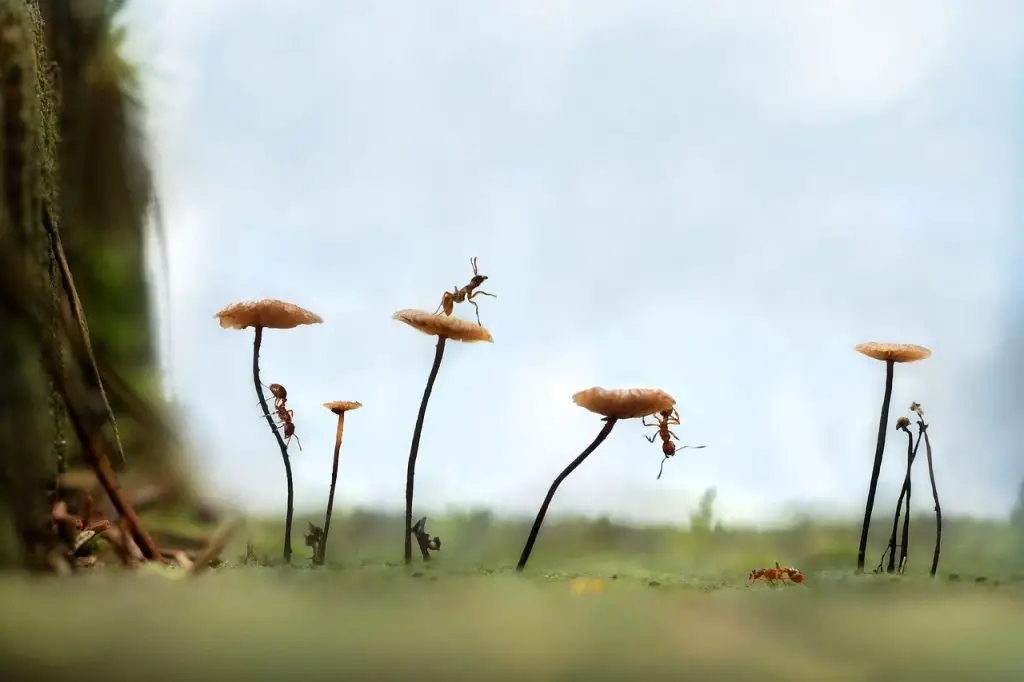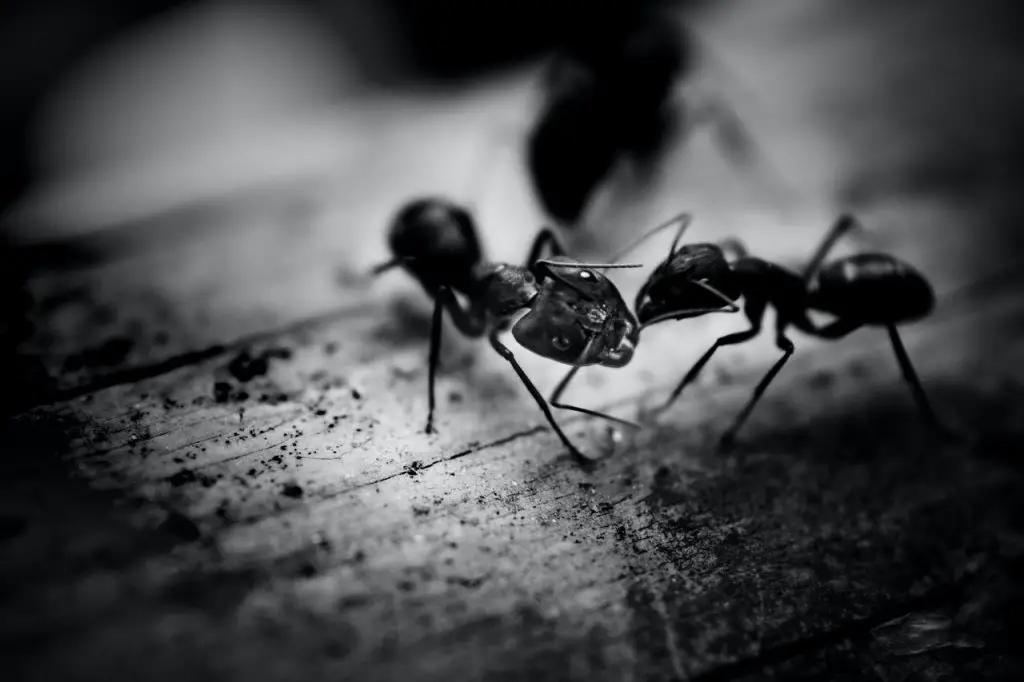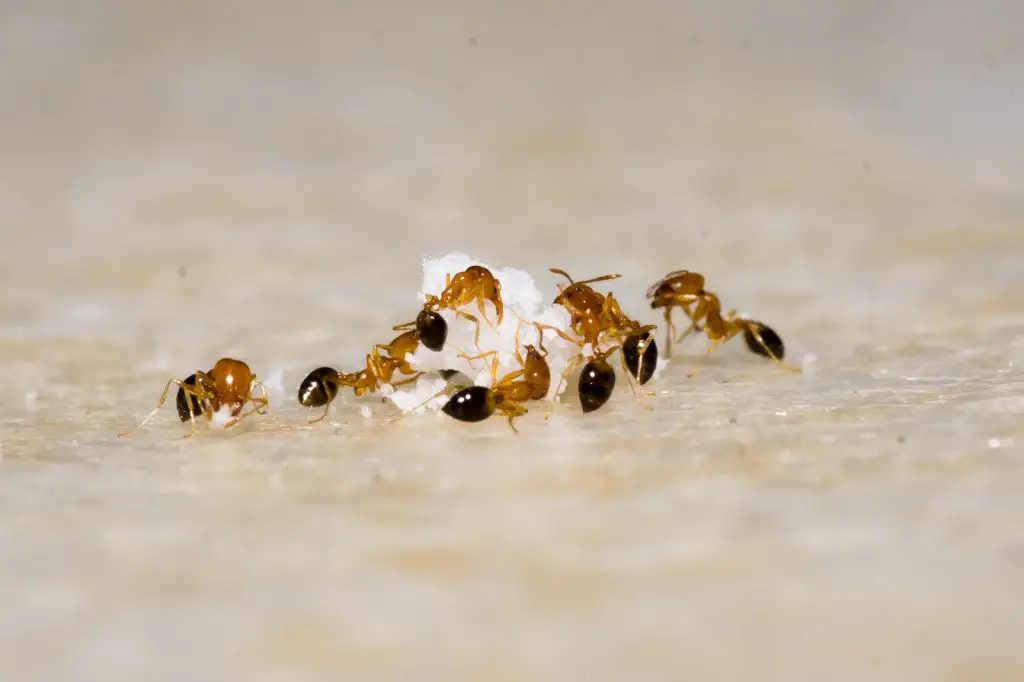Ants persistently invade homes, necessitating extra precautions to keep them at bay. It is unclear if they rest at night or become more active at night.
Are ants active at night?
Yes most of the ant species work actively after the sun goes down mostly in summers.
Ants, although known for their non-stop 24/7 work ethic, exhibit increased activity during the evening in certain species.
The focus of this article is ant species that exhibit increased activity at night.
Ants typically avoid the daytime heat and stop foraging when the ground temperature rises.
Therefore, they may continue their work at night when the weather is cooler.
What are ants activities during the night time?
To maintain a healthy and functional nest, ants perform various ongoing tasks such as
- Cleaning
- Caring for broods
- Digging tunnels
Ants adjust their foraging habits based on temperature, preferring the cooler nights.
However, daytime foragers get better food sources.
In the Sahara desert, ants stop foraging if the temperature exceeds their critical thermal limit of 53.6°C.
Which Ant species work at night?
There are different species of ants some of them work in the day time and some of them work in the moonlight
Carpenter ants are a type of insect that are active at night, making rustling sounds in walls as they build tunnels in wooden furniture or drywalls.
Sugar ants carry out their activities without interruption, and they can be observed above ground at any time of day..
Light sources in the dark attract both flying termites and winged carpenter ants, causing them to move around the light source.
They perceive natural light as attractive.
- Bull Ants
Myrmecia, a genus of ants commonly found in Australia, includes bull ants that are recognizable by their scissor-like mandibles and painful stings.
These ants have a large, slender body and are typically black-red in colour.
Bull ants rely on visual landmarks in their surroundings, such as the panorama, to navigate and are known to forage during the evening twilight hours.
- Pavement Ants
Pavement ants scurry along pavements and sidewalks and are typically small and black in color.
They can be bothersome pests because of their inclination to enter homes in search of food.
Although they are primarily active at night, during the spring and summer seasons, pavement ants may also forage during the day.
- Ghost Ants
Ghost ants are so named because of their almost transparent legs, which appear pale.
These ants have a darker head and thorax compared to the rest of their body, and typically measure around 4 mm in size. And these ants are active both during the day and at night.
These ants prefer to nest in soil, but they can also be found dwelling under rocks, logs, decaying wood, and beneath tree bark.
Additionally, these ants have been known to cause damage to crops and pose a threat to wildlife.

Are ants Nocturnal or Diurnal?
Ants exhibit different patterns of activity based on whether they are diurnal or nocturnal.
Diurnal ants are most active during the day, while nocturnal ants are most active at night.
Interestingly, in colder climates, ants tend to be more active during the day as it is warmer. Whereas in hot climates, they are more active at night.
Many nocturnal ant species are found in tropical regions to avoid the high daytime temperatures.
Ants that are diurnal are usually located in temperate regions. Here they can forage during warm days and return home before the temperature drops.
Nocturnal ants, on the other hand, are mostly located in tropical areas. Where they can avoid the high temperatures of the day by being active at night.
Interestingly, an individual colony can have both nocturnal and diurnal workers.
This happens when certain tasks need to be completed during the night or if food sources are only available during the day.
What type of ants disappear at night?
Species that are diurnal, or active during the day, tend to retreat into their mounds or nests at night. Then they leave the house empty of workers.
This is because their efficiency in performing activities decreases during the night. Which causes them to limit their movements to a single location.
Navigating back to their nests in the dark poses a challenge for these species due to their limited vision in low light conditions.
There is also a risk of getting lost while foraging outside of their territory.
Certain species such as Argentine and fire ants tend to stay inside their nests when it becomes dark, and little black or pharaoh ants are not visible during nighttime hours.
Some bicolored carpenter ants, which have small black bodies with reddish or blackish hues. They can be difficult to spot due to their tiny size and dark coloration.

Do ants sleep at night?
While ants don’t typically sleep for eight hours straight like humans do. Studies have shown that they do take brief naps throughout the day.
Workers may rest for as little as eight minutes every 12 hours, or take over 250 one-minute naps in a single day. Often at irregular intervals.
Queens, on the other hand, tend to have more regular and longer periods of deep sleep, lasting up to nine hours per day. That is twice as much as the amount of rest that a worker ant gets.
This extra sleep is likely necessary for queens who lay up to 300,000 eggs per day, while still attending official functions and other duties.
The worker ants ensure the colony is always protected and served by engaging in power napping behavior to have enough awake ants at any given time.
This difference in sleep patterns has long-term consequences, with worker ants typically only living up to 6-12 months. While queens can live up to six years.
In fact, some queens live up to 45 years.
Most insects display some type of sleep or rest behaviour, but fruit flies are especially interesting because their sleep patterns resemble those of humans.
They can sleep for up to seven hours at night, which is impressive given their short 50-day lifespan.
Therefore, researchers frequently use them in sleep studies that investigate the impact of caffeine and sleep deprivation.
In fact, the latter can even lead to cognitive impairments in fruit flies.
Where do ants sleep?
Some animals have preferred sleeping locations, like burrows or nests, that offer warmth and protection from predators.
However, other animals, such as lions or seals, are less concerned about predators and will sleep wherever they happen to be.
A variety of animals, including birds, lizards, and other insects, consider ants a desirable snack since they are not at the top of the food chain.
Therefore, ants may not have the luxury of sleeping wherever they please. Ants may need to be more cautious about their sleeping locations to avoid becoming prey.
Conclusion
Ants are fascinating creatures that exhibit remarkable adaptability and a tireless work ethic.
While some species are active during the day, others thrive under the cover of darkness. They take advantage of cooler temperatures to carry out their essential tasks.
Whether they are digging tunnels, caring for their young, or foraging for food, ants work tirelessly to ensure the survival and growth of their colonies.
Despite their small size, ants face numerous challenges in their daily lives, from predators to changing weather conditions, but their ability to adapt and persevere makes them a truly remarkable part of the natural world.
Understanding their behavior and habits can help us coexist with them in our homes and gardens while appreciating their important role in our ecosystem.



